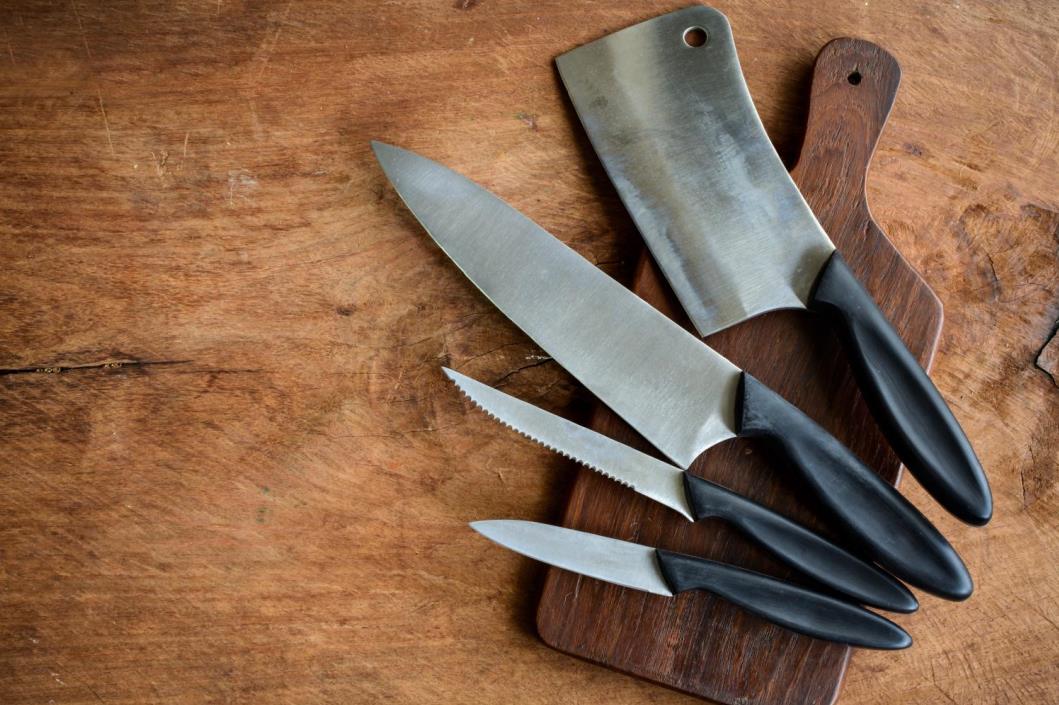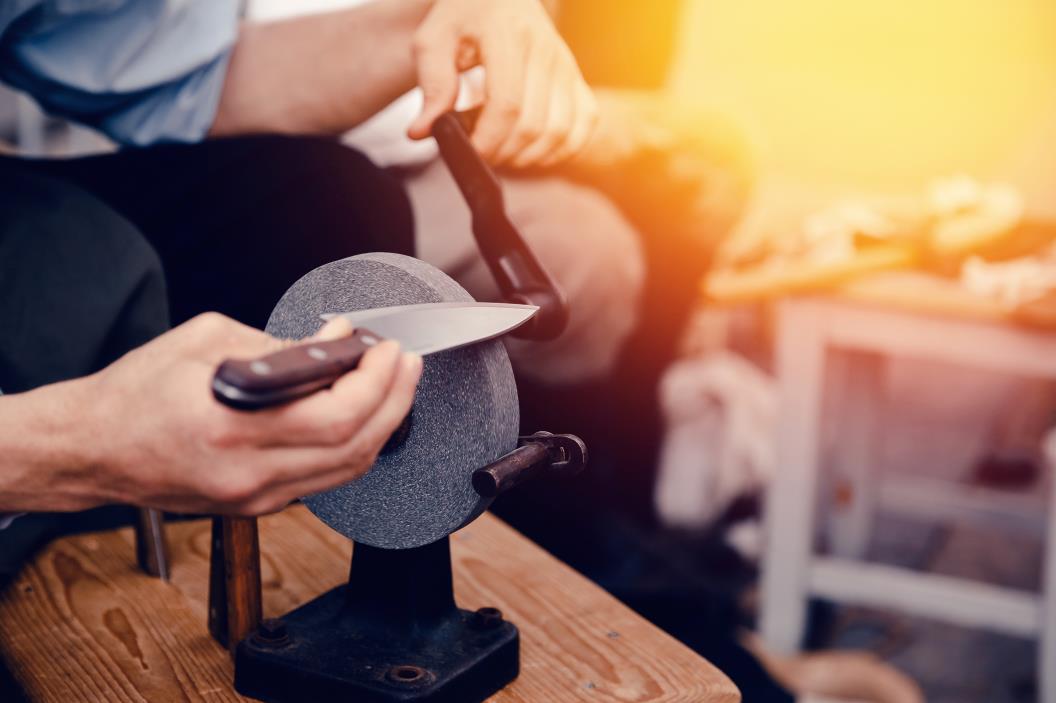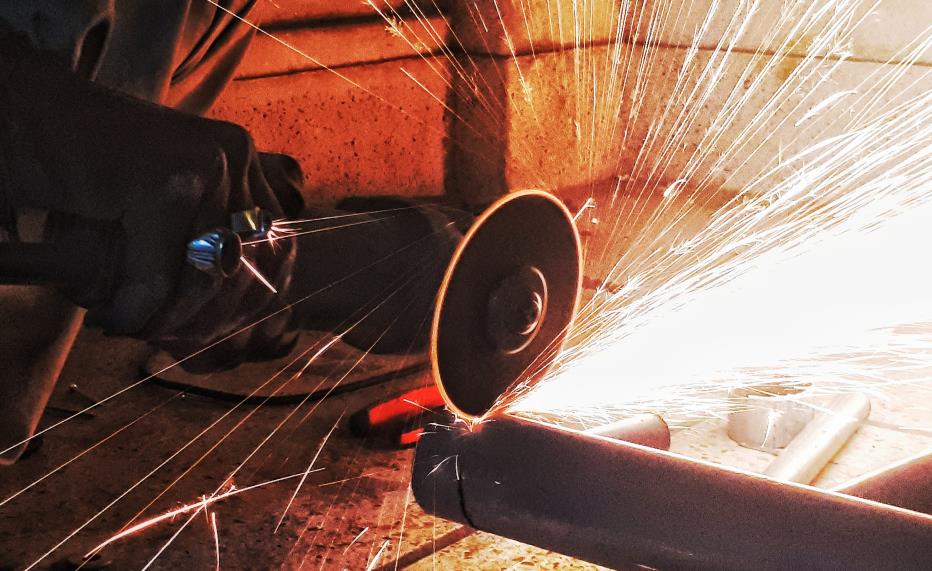Often thought of as the Chinese version of the X50CrMoV15 German steel, 5Cr15MoV is a common choice among knife manufacturers, especially for kitchen knives.
One of the reasons why 5Cr15MoV is very prevalent is thanks to adequate edge retention combined with incredible corrosion resistance. Although 5Cr15MoV knives can’t hold a sharp edge for as long as professionals need, it is suitable for most home cooks.
5Cr15MoV steel is a considerably affordable option. Many knife manufacturers utilize this steel to forge their blades. You can find kitchen knives made using 5Cr15MoV in various types, from chef’s knives to paring knives to cleavers. In this article, we’ll break down the features of 5Cr15MoV steel and what to expect from kitchen knives made from this steel.
Table of contents
5Cr15MoV steel chemical composition
- 0.5% Carbon: Increases the steel’s hardness, strength, and hardenability.
- 15% Chromium: Improves corrosion resistance significantly but also increases the wear resistance and hardenability.
- 0.6% Molybdenum: Helps the steel improve tensile strength, toughness, hardenability, and corrosion resistance.
- 0.1% Vanadium: Increases toughness, wear resistance, and hardness at high temperatures when forging the steel.
- 0.4% Manganese: Boosts hardness and decreases brittleness.
5Cr15MoV steel properties

These figures don’t mean much if it doesn’t produce the ideal knife blade. Here are the properties of 5Cr15MoV steel covering hardness, wear resistance, toughness, and corrosion resistance.
Hardness
5Cr15MoV steel isn’t on the harder end compared to others. Most 5Cr15MoV kitchen knives are between 54 and 56 HRc. While this affects edge retention, the blades made from 5Cr15MoV aren’t as susceptible to chipping. 5Cr15MoV knives are more forgiving for incorrect use and tend to bend or lose shape rather than chip or crack.
Wear resistance
5Cr15MoV doesn’t have exceptional wear resistance. Nevertheless, this is both a positive and a downside. The wear resistance refers to the ability of the steel resisting to lose material. 5Cr15Mov will lose material more than some other steel, but give you an easier time sharpening. On the other hand, the blades will show a fair amount of scratching from sharpening and honing. These scratches can also appear from contacting the knife with certain dense ingredients like bones.
Toughness
The steel’s toughness refers to its ability to go against deformation. Additionally, it’s about how well the steel absorbs energy without losing shape. Generally, softer steel manages this better than hard steel. 5Cr15MoV steel doesn’t have incredible toughness, much like its wear resistance. Still, its toughness is more than enough for what you demand from a kitchen knife. 5Cr15MoV’s toughness is far more than needed for a kitchen knife.
Corrosion resistance
5Cr15MoV contains enough chromium to call it stainless steel. A 5Cr15MoV blade rusting in moist and wet settings when adequate care is provided isn’t expected. It would take a lot of consistent negligence for 5Cr15MoV to rust or show signs of oxidation.
5Cr15MoV steel uses
5Cr15MoV steel is predominantly used for forging knife blades. The affordable price and the adequate corrosion resistance make it ideal for EDC and some kitchen knives. Although it isn’t that hard, it can hold a sharp edge for ideal periods in a home kitchen. There is also a fair number of EDC pocket knives made from 5Cr15MoV steel.
Since this particular steel isn’t hard, some blades might be stamped rather than forged. Although there is nothing wrong with stamped knives, knowing what makes them different is important. Read on the differences between stamped and forged kitchen knives.
5Cr15MoV steel kitchen knives characteristics
When studying the characteristics of a kitchen knife, there are certain things that we must cover. From edge retention to durability, here is what to expect from a 5Cr15MoV steel kitchen knife.
Edge retention
The hardness and the wear resistance of steel affect edge retention. 5Cr15MoV kitchen knives are usually 54 HRc. This hardness level on the Rockwell hardness rating and its wear resistance means the blade can hold an edge for a fair duration.
However, it’s nowhere near what you’d expect from a premium-quality kitchen knife. For example, most knives in our store are around 58 HRc. This is optimal for professionals and home cooks alike. When operating your kitchen with a 5Cr15Mov steel knife, you’ll need to sharpen it after some time of use.
Ease of sharpening

Some kitchen knives have incredible edge retention that can make you forget about sharpening stones. Yet, these knives tend to be extremely challenging to sharpen. On the contrary, some knives don’t hold an edge for long but are easier to sharpen. 5Cr15MoV kitchen knives are more like the second example.
You’ll get fair to decent edge retention from a 5Cr15MoV kitchen knife, but sharpening them will be easy. This is mainly due to the wear resistance. When sharpening a knife using a sharpening stone, such as a whetstone, you remove material from the edge, creating a new, sharper one. Since wear resistance isn’t 5Cr15MoV steel’s strongest, sharpening will be fairly easy.
Rust resistance
The chromium amount in 5Cr15MoV steel categorizes it as stainless steel. Sure, there are other steels with more chromium. Some have close to or even over 20% chromium. Still, 5Cr15MoV has more than enough to handle a kitchen environment.
However, this isn’t to say that you can leave a 5Cr15MoV kitchen knife dirty in the sink. Leaving the blade dry when not using it and hand washing should be a habit regardless of the knife’s ability to keep rust at bay. Doing these will prolong the life and increase the performance of any knife.
Durability
5Cr15MoV is a tough piece of steel that can take everything that a knife is supposed to endure. It will do this without showing signs of depreciation soon. This makes 5Cr18MoV more or less an ideal blade material for survival and EDC knives. 5Cr15MoV has great corrosion resistance and fair wear resistance. A kitchen knife made from this steel can last you for years provided care and give the same performance for the duration, as if it was brand new.
There are vital care elements that every cook should put in place for their knives, though – not just for 5Cr15Mov blades, but any other. Always hand-washing, storing them correctly, and sharpening the blade when necessary, to name a few.
Summary of advantages and disadvantages of 5Cr15MoV knives
Pros
- It offers adequate edge retention for most home cooks.
- The price appeals to those on a budget.
- Sharpening takes little effort and time.
Cons
- Although it offers satisfying edge retention for home cooks, it isn’t the best pick for professionals using their knives every day for hours.
5Cr15MoV steel vs. X50CrMoV15 steel (equivalent)

There is a reason why people often refer to 5Cr15MoV as the Chinese match to X50CrMoV15 steel. They are very close, both in chemical composition and performance you get in hardness, toughness, corrosion resistance, and wear resistance.
The only difference in the chemical composition of 5Cr15MoV and X50CrMoV15 is silicon. While 5Cr15MoV doesn’t have any silicon, X50CrMoV15 steel contains 1%. Additionally, 5Cr15MoV has 0.2% more molybdenum but has 0.2% less manganese. Other than these differences, these two steel are pretty much the same and are martensitic. This refers to stainless steel with hard crystalline structure.
Both X50CrMoV15 and 5Cr15MoV aren’t hard steel. With proven heat treatment techniques, the maximum hardness is around 56 to 58 HRc at most. The majority of the knives made from these steels have around 54 HRc hardness. Lastly, 5Cr15MoV is a lot more affordable than X50CrMoV15 – not because it is primarily produced in China but due to the continuous demand.
5Cr15MoV steel vs 440c steel
440C steel is in the region of premium-grade steel, whereas 5Cr15MoV is considered as more on the lower end. 440C steel outperforms 5Cr15MoV in pretty much all aspects. It has better edge retention, toughness, and corrosion resistance. If the cost isn’t a concern, 440C is the way to go.
However, if the steel’s price is even the slightest consideration, 5Cr15MoV will show its true worth. For most home cooks that aren’t using their knives for hours at a time, a kitchen knife made from 5Cr15MoV will suffice. Nonetheless, the knives made from better steel will give you an easier time in the kitchen. Additionally, knives made from 440C steel can cost twice or even three times as much as their 5Cr15MoV alternatives.
Overall, 5Cr15MoV is a more affordable option than 440C. If you’re looking for a budget kitchen knife, you’ll come across 5Cr15MoV steel more often. With higher-end blades, 440C is more apparent.
Takeaway
All and all, 5Cr15MoV is an affordable choice for knife manufacturers. If you’re on a budget and want to get a decent knife available, 5Cr15MoV is a satisfying option for most home cooks. Those who need a higher-end knife can look for more expensive alternatives like the S30V.









